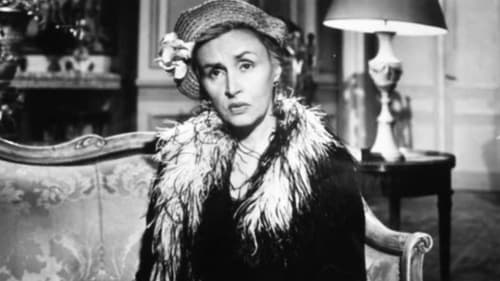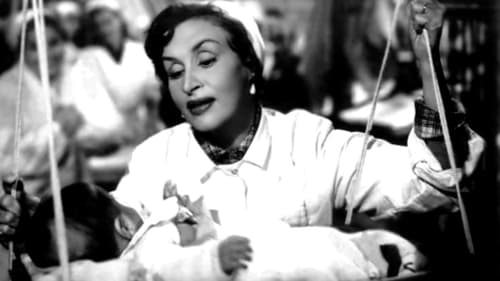Tita Merello
Рождение : 1904-10-10, San Telmo, Buenos Aires, Argentina
Смерть : 2002-12-24
История
Tita Merello (born Laura Ana Merello) was a prominent Argentine film actress, tango dancer and singer of the Golden Age of Argentine Cinema. In her 6 decades in Argentine entertainment, at the time of her death, she had filmed over thirty movies, premiered twenty plays, had nine television appearances, completed three radio series and had had countless appearances in print media. She was one of the singers who emerged in the 1920s and created the female voices of tango. She is primarily remembered for the songs "Se dice de mí" and "La milonga y yo".

A touching tribute to a fundamental figure of the Argentine show, which shows “Tita” in the intimacy of the Carreras family and at the same time, on stage in her last show.

Tita
A widowed mother cannot prevent her child from dying from an overdose.

A plague ravages Buenos Aires. Those affected by it are executed on the spot; those who are healthy should report to the authorities. Escaping both from the authorities and from the disease, seven survivors head south.

Based on the life of María Salomé Loredo, a figure famous for her healings and assistance to the poor of the late nineteenth and first half of the twentieth century.

Luciana
A couple of screenwriters try to find a new idea for a movie.

A late pregnancy disrupts the routine of a mature marriage.

Writer

Tita

There are 3 stories about the intermediaries of marriage (the ads of magazines, seers and agencies): Sentimental mail, about an energetic woman who wants to marry a dominable man; Elixir of love, on the subject of the title; and Romantic about a melodic singer.

Margot

Marga Albanese

Rosa
Inmates in a prison plan a massive break. When they put their plan into action, however, they find that they may have underestimated the guards and prison officials, and the situation quickly turns into a bloody gun battle. This action feature from director Enrique Carreras was the official entry for Argentina at the 1964 Berlin Film Festival.

Amorina
A woman feels abandoned by her husband and children.

Mecha Gutiérrez
A prostitute persecuted by the police, receives the interested protection of a greedy merchant. He takes refuge in his house one night and meets his nephew, a sensitive boy who wants to be a musician.

Three-episode film linked to each other by means of a medallion, where love is the engine that drives people to act the way they did.

Martina Brizuela
A humble woman breaks her relationship with her boyfriend and dedicates herself to taking care of her siblings, as they grow up she is left alone.

Paulina
The action occurs in Abasto Market in Buenos Aires, Argentina. A grown up single woman marries a mafia man who promised her he would change. After they've married, his past come to ruin the wife's life.

A handsome newcomer in a village marries a local girl. A year or so later an abandoned baby is left on the couple's doorstep, a baby the man had with another woman. They decide to raise the kid along with the one they had together.

Isabel
The woeful tale of a trained nurse falsely accused of murder and shipped off to prison for five years.

Dominga
An italian man is unfairly imprisoned and his wife must work to maintain the family.

Julia
A woman and a man are involved in trafficking.

Carancha
Leandro and Carancha inhabit the islands located in the Parana delta. When their son brings home a girlfriend, her presence makes Carancha jealous and dramatic consequences ensue.

Felisa Roverano
Disenfranchised working-class woman leaves a bad man and finds a good one. Twenty years later...

Filomena Marturano
Filomena, a former prostitute in her 40s, tricks a wealthy shopkeeper to marry her and support her three children.

Laura Moreno
A policeman infiltrates a gang of criminals.

Ella misma
The director of a tango set is in love with the singer but she marries another man who eventually abandons her. In their old age, their children will fulfill their dreams.

Brígida
A retired actor decides to donate his savings to his nephew and move to an old house, there he meets an old love.

Margot
"The great love of his life" happened five times; one of those women just wrote him a letter. Which one will it be?

Desideria, a servant girl, dreams of traveling to Buenos Aires. Incredibly, Blas Pastrana, a relative of her employers, is dying in Argentina and expressly asks them to travel with her. When he arrives at his deathbed, he says that he inherits everything to the employee, confessing that she is his daughter, but on one condition: that in less than two weeks she gets married. Her employers try to convince her to marry the son of the family, Jorge, but Desideria is interested in Tito, a nice porteño. Everything ends in a surprise ending.

The story of different episodes that happen in each of the sections of a newspaper.

Cora Moreno
Daniel, a smuggler is chased by a policeman. In his escape are helped by the messages that his lover transmits to him in code by means of the tangos that sings in a radio program. To hide himself, he pretends to be a teacher in a small town in Entre Ríos, and by the time he discovers it, the police have already faced a new life.

Tita
Two unfaithful husbands have to win their wives back while they take their revenge on them by going out with other people.

Dora
Various love and crime stories take place in the context of a theater, between tango singers, musicians and dancers.

Tita
¡Tango! follows a formula established by Carlos Gardel with films such as Luces de Buenos Aires (The Lights of Buenos Aires, 1931) in which a melodramatic story is interspersed with tango songs. However, the film had less dialog and more music, making it more like a musical revue. This format would be copied by many subsequent films. The plot is derived from tango songs. Many of these songs tell of the seduction of an innocent slum girl by a rich man who promises her a glamorous life, but who abandons her when her looks fade. The stylized and sentimental plot of ¡Tango! revolves around a young man who is abandoned by his girlfriend for an older rich man and is heartbroken. The film follows his misfortunes.


























